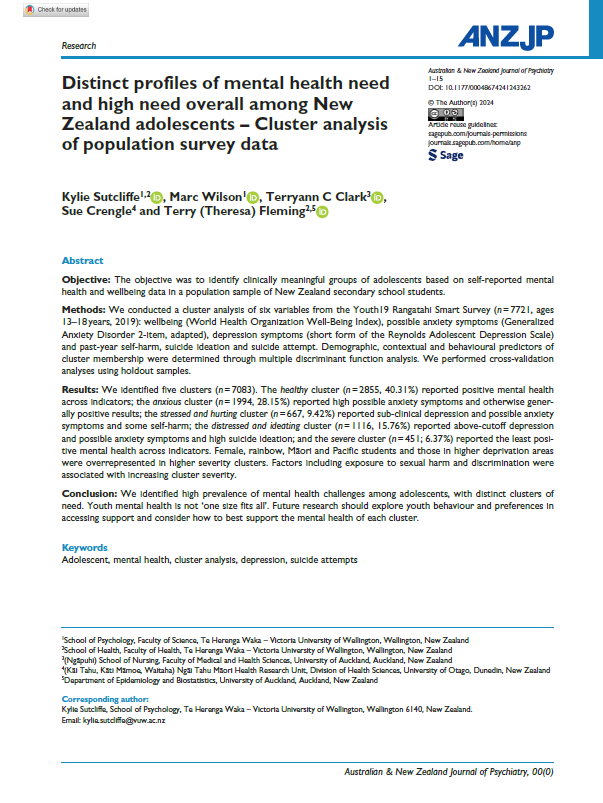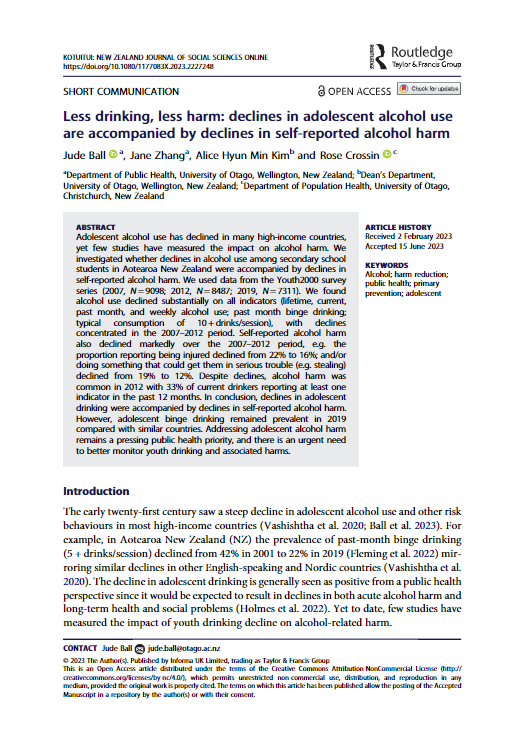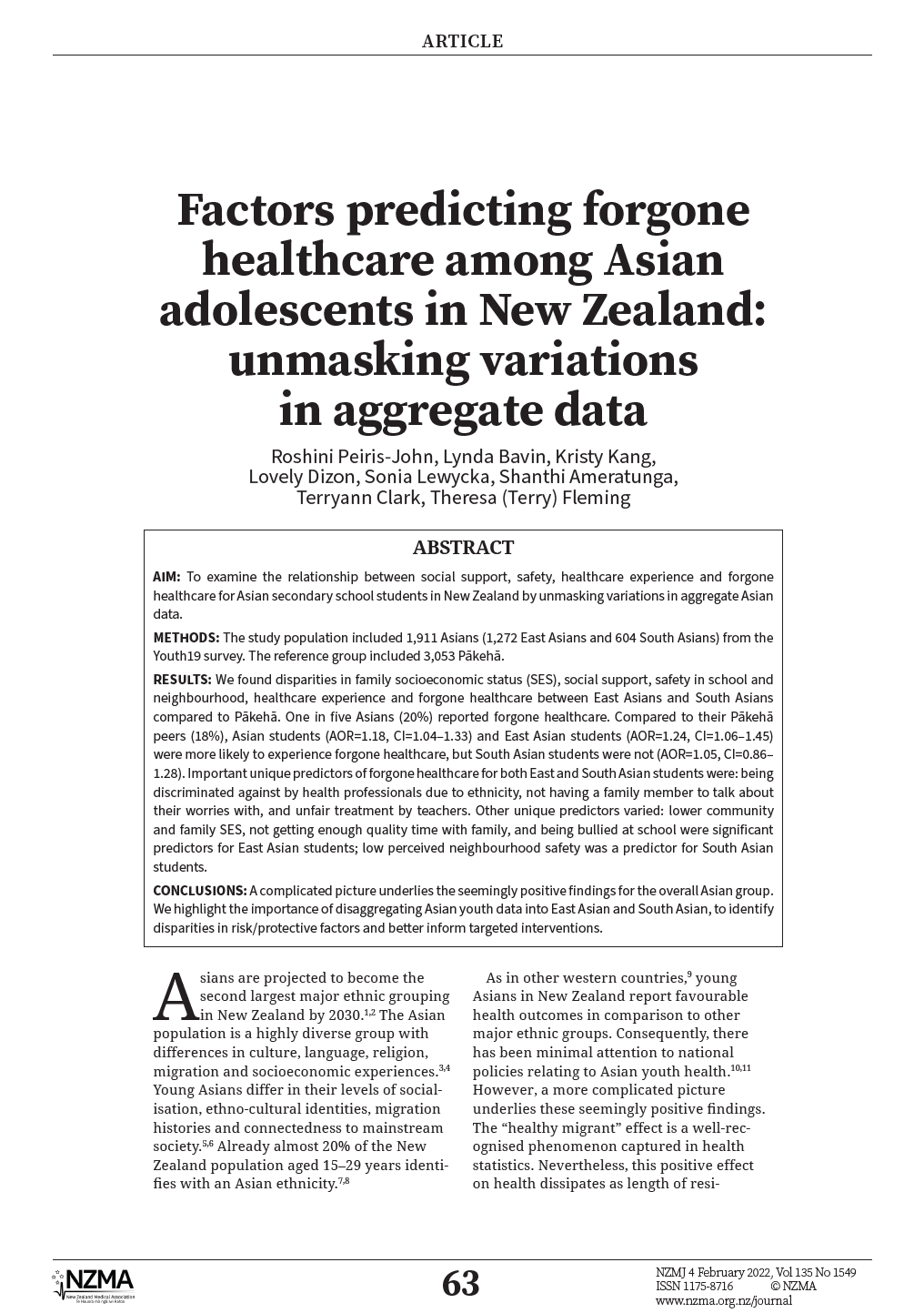We statistically allocated Youth19 participants to clusters based on self-reported wellbeing, depression symptoms, possible anxiety symptoms, and past-year self-harm, suicide ideation, and suicide attempt. Key findings:
We identified five distinct clusters
Only 40% of participants were classed as healthy with no significant symptoms on any included measures
Around 6% appeared severe, with 100% prevalence of suicide attempt and high overall levels of self-harm, depression symptoms, and possible anxiety symptoms
Three intermediate clusters were characterised by high anxiety symptoms with otherwise positive results (anxious, 28%); scores approaching cutoffs for depression and anxiety symptoms and some self-harm (stressed and hurting, 9%); and above-cutoff scores for depression and possible anxiety symptoms and high suicide ideation without attempt (distressed and ideating, 16%)
Female, Māori, Pacific, and rainbow students were overrepresented in higher severity clusters, with inequities at least partially explained by exposure to harms such as sexual abuse and discrimination.


















